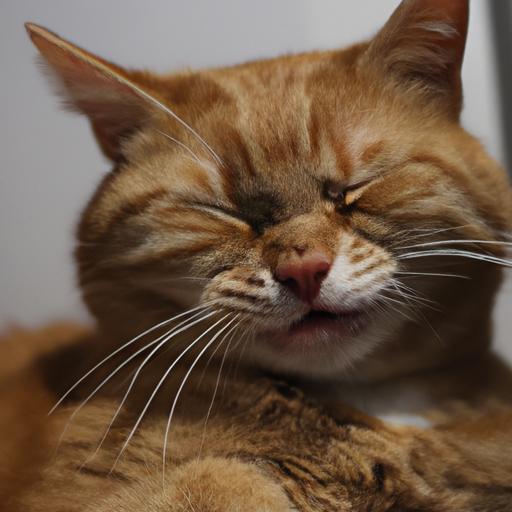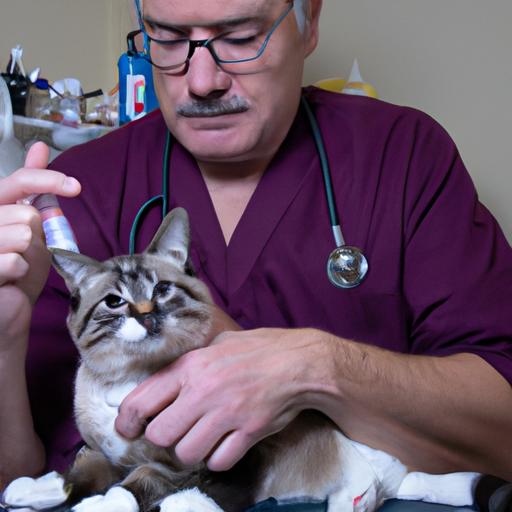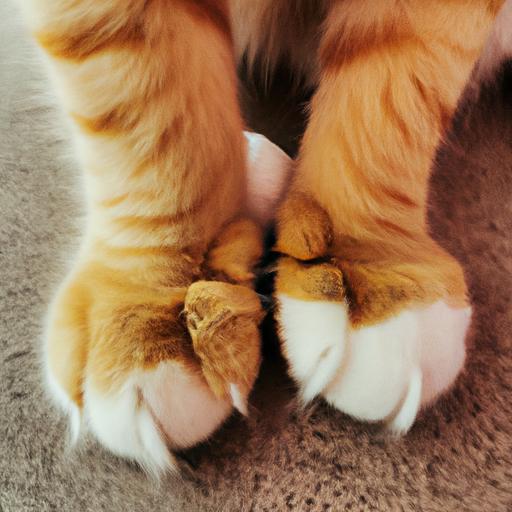Cat Vaccine for Leukemia: Protecting Your Feline Companion’s Health
As cat owners, we always strive to provide the best care and protection for our furry friends. One crucial aspect of ensuring their well-being is vaccinating them against potential health threats, such as feline leukemia. In this article, I will shed light on the importance of cat vaccines for leukemia, provide an overview of the feline leukemia virus (FeLV), and emphasize the significance of vaccinating our cats against this potentially fatal disease.
Importance of Vaccinating Cats for Leukemia
When it comes to safeguarding our cats’ health, prevention is key. Vaccinating your feline companion against leukemia is a vital step in minimizing the risks associated with the feline leukemia virus (FeLV). By providing immunity against this virus, we can help protect our cats from the devastating consequences of FeLV infection.
Overview of Feline Leukemia Virus (FeLV)
Feline leukemia virus (FeLV) is a contagious and potentially life-threatening disease that affects cats worldwide. It is primarily transmitted through close contact with infected cats, such as mutual grooming, sharing food bowls, or through bite wounds. Kittens can also contract the virus from their mothers during birth or through infected milk.
Significance of Cat Vaccines for Leukemia
Cat vaccines for leukemia play a crucial role in preventing the spread of the feline leukemia virus and reducing the risk of infection. These vaccines stimulate the cat’s immune system to recognize and combat the virus, providing essential protection against FeLV-related diseases, such as anemia, cancer, and immunodeficiency.
By vaccinating our cats, we take a proactive step in safeguarding their health and ensuring a higher quality of life. Prevention is always better than cure, and the same applies to feline leukemia. So, let’s explore the different types of vaccines available, recommended vaccination schedules, and the effectiveness and risks associated with cat vaccines for leukemia in the subsequent sections of this article.
Stay tuned to discover how cat vaccines can protect your beloved feline companion from the devastating effects of feline leukemia and enhance their overall well-being. Together, let’s ensure a healthier and happier life for our furry friends.
Understanding Feline Leukemia Virus (FeLV)
Feline Leukemia Virus (FeLV) is a serious viral infection that affects cats worldwide. To protect our feline companions effectively, it is essential to have a comprehensive understanding of the causes and transmission of FeLV, the symptoms it manifests, and the diagnostic methods used to detect the virus.
Causes and Transmission of FeLV
FeLV is primarily transmitted through close contact between infected and non-infected cats. The virus can be present in various body fluids, including saliva, nasal secretions, urine, and feces. This means that cats can contract FeLV through mutual grooming, sharing litter boxes, or even by sharing food and water bowls.
Symptoms and Impact on Cat Health
FeLV can have a significant impact on a cat’s health, leading to various symptoms and complications. Some common signs of FeLV infection include weight loss, loss of appetite, lethargy, persistent fever, and swollen lymph nodes. Over time, FeLV weakens the immune system, making infected cats more susceptible to secondary infections, anemia, and even the development of certain types of cancer.
Diagnosing Feline Leukemia
Diagnosing FeLV is a crucial step in managing the disease and providing appropriate care for infected cats. Veterinarians typically perform a blood test to detect the presence of FeLV antigens or antibodies. These tests are highly reliable and can accurately determine whether a cat has been exposed to the virus.
Early diagnosis is essential as it allows us to take necessary precautions to prevent the spread of FeLV to other cats and to provide supportive care to infected individuals. Regular check-ups and routine testing are recommended, especially for cats that have a higher risk of exposure to FeLV, such as outdoor cats or those living with infected feline companions.
By gaining a deeper understanding of the causes, transmission, symptoms, and diagnostic methods associated with FeLV, we can better protect our cats and ensure timely intervention if they are infected. Let’s delve into the different types of cat vaccines available for leukemia and the recommended vaccination schedules in the subsequent sections of this article. Together, we can keep our feline friends safe and healthy.
cat vaccine for leukemia: What You Need to Know
When it comes to protecting our cats from feline leukemia, understanding the different aspects of cat vaccines is essential. In this section, we will delve into the types of vaccines available, the recommended vaccination schedule, and the effectiveness and risks associated with cat vaccines for leukemia.
Types of Vaccines Available
Several vaccines are available to provide protection against feline leukemia. The two primary types are inactivated vaccines and recombinant vaccines. Inactivated vaccines contain killed virus particles, while recombinant vaccines use genetically engineered viral proteins. Both types stimulate the cat’s immune system to produce antibodies that combat the feline leukemia virus.
Recommended Vaccination Schedule
It’s crucial to follow a recommended vaccination schedule to ensure your cat’s optimal protection against feline leukemia. Generally, kittens receive an initial series of vaccinations starting at around eight to nine weeks of age. The vaccine is typically administered as a series of two to three doses, with intervals of two to four weeks between each vaccination. Adult cats without a vaccination history may also require the initial series.
To maintain immunity, regular booster shots are necessary. Depending on the vaccine manufacturer’s recommendations and your veterinarian’s advice, boosters are typically given annually or every two to three years. Regular vet visits and discussions with your veterinarian will help determine the best vaccination schedule for your cat.
Effectiveness and Risks of Cat Vaccines for Leukemia
Cat vaccines for leukemia have proven to be highly effective in preventing the feline leukemia virus and its associated diseases. However, it’s essential to note that no vaccine provides 100% protection. Some cats may still contract the virus despite being vaccinated. Nevertheless, vaccinated cats generally have a lower risk of developing severe diseases associated with feline leukemia.
As with any medical intervention, there may be potential risks associated with cat vaccines. Common side effects include mild fever, lethargy, and swelling at the injection site. These side effects are usually temporary and resolve on their own. Severe adverse reactions are rare but can occur. It’s crucial to discuss any concerns or potential risks with your veterinarian before proceeding with vaccination.
By understanding the types of vaccines available, following the recommended vaccination schedule, and being aware of the potential effectiveness and risks, we can make informed decisions to protect our cats against feline leukemia. In the next section, we will explore the myriad benefits that come with vaccinating our feline companions.
Benefits of Vaccinating Cats for Leukemia
Vaccinating our cats against feline leukemia offers a multitude of benefits that go beyond mere disease prevention. By taking the proactive step of vaccinating our feline companions, we can significantly enhance their overall health, well-being, and longevity. Let’s delve into the remarkable benefits of cat vaccines for leukemia.
Prevention of FeLV Transmission
One of the primary advantages of vaccinating cats against leukemia is the prevention of feline leukemia virus transmission. FeLV spreads through close contact with infected cats, and even seemingly healthy cats can carry the virus. By ensuring our cats are vaccinated, we reduce the risk of them contracting the virus and minimize the chances of them spreading it to other feline companions they come in contact with. It not only protects our cats but also contributes to the well-being of the entire feline community.
Protection against FeLV-Associated Diseases
Feline leukemia virus infection can lead to severe health complications, including anemia, cancer, and immunodeficiency. Vaccinating our cats against leukemia provides them with crucial protection against these FeLV-associated diseases. By bolstering their immune system’s ability to combat the virus, we significantly reduce the likelihood of our feline friends developing debilitating conditions that can impact their quality of life. Vaccination acts as a shield, safeguarding our cats from the potential long-term consequences of feline leukemia.
Enhancing the Overall Health and Well-being of Cats
Beyond the direct protection against feline leukemia, cat vaccines for leukemia have a broader positive impact on our cats’ overall health and well-being. By minimizing the risk of FeLV infection, we promote stronger immune systems in our feline companions, enabling them to fight off other diseases more effectively. This translates to healthier, happier cats who are less susceptible to various illnesses, leading to a better quality of life and reduced veterinary expenses.
As responsible pet owners, it is our duty to prioritize the health and well-being of our cats. Vaccinating them against feline leukemia not only protects them from this potentially devastating virus but also contributes to the overall welfare of the feline community. Let’s continue our journey to discover how we can prepare our cats for vaccination, ensuring a smooth and safe process.
Preparing Your Cat for Vaccination
When it comes to vaccinating your cat against leukemia, proper preparation is key to ensure a smooth and successful vaccination process. Here are some essential steps to follow when getting your feline companion ready for their vaccination.
Consultation with a Veterinarian
Before scheduling a vaccination appointment, it is crucial to consult with a veterinarian. They will assess your cat’s overall health and determine whether they are suitable candidates for the vaccination. Additionally, the veterinarian can address any concerns or questions you may have regarding the vaccine and its potential side effects.
During the consultation, make sure to inform the veterinarian about your cat’s medical history, including any pre-existing conditions or previous adverse reactions to vaccines. This information will help the veterinarian make an informed decision and provide personalized recommendations for your cat’s vaccination needs.
Pre-vaccination Health Check-up
Prior to receiving the vaccine, your cat will undergo a thorough health check-up. This examination ensures that your cat is in optimal health condition for vaccination and helps identify any underlying health issues that may require attention.
The veterinarian will listen to your cat’s heart and lungs, check their temperature, and examine their overall physical condition. This comprehensive assessment ensures that your cat is ready to receive the vaccine and minimizes the risk of complications.
Vaccination Procedure and Aftercare
During the vaccination appointment, the veterinarian will administer the cat vaccine for leukemia. The vaccine is typically given as an injection, generally in the scruff of the neck or the hind leg. This process is quick and relatively painless for your cat.
After the vaccination, it is essential to provide your cat with a calm and comfortable environment. Keep an eye on them for any immediate adverse reactions or signs of discomfort. Some cats may experience mild side effects such as lethargy or a slight decrease in appetite, which should resolve within a day or two.
If you notice any concerning symptoms or if your cat’s condition worsens, contact your veterinarian immediately for further guidance. Remember to follow any post-vaccination care instructions provided by the veterinarian to ensure the best possible outcome for your cat’s health.
By following these steps and working closely with your veterinarian, you can ensure that your cat is well-prepared for their leukemia vaccination, promoting their overall health and protecting them from the feline leukemia virus.
Conclusion
In conclusion, vaccinating your cat against feline leukemia is an essential step in ensuring their long and healthy life. By understanding the importance of cat vaccines for leukemia, the overview of the feline leukemia virus (FeLV), and the significance of vaccination, we can make informed decisions to protect our feline companions.
Vaccines provide a vital defense against the feline leukemia virus, preventing its transmission and the development of associated diseases. By following the recommended vaccination schedule and consulting with a veterinarian, we can ensure that our cats receive the necessary protection against FeL
Remember, prevention is always better than cure. By taking proactive measures and providing our cats with the necessary vaccines, we can significantly reduce the risks associated with feline leukemia and enhance their overall health and well-being.
So, let’s prioritize the health of our feline friends and make cat vaccines for leukemia a top priority. Together, we can create a safer and healthier environment for our beloved cats.
Protect your cat today, vaccinate against feline leukemia, and let them enjoy a life filled with joy, playfulness, and purrfection!





